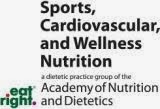Omega-3s will continue to top the list of health promoting
supplements in 2014. Omega-3s, particularly docosahexaenoic acid (DHA), and
eicosapentaenoic acid (EPA), have been well researched and may be recommended
for improving athletic performance.
You may have already heard that omega-3s promote your heart
health. Read about it here and here. But
what can omega-3s do for a bodybuilder like you?
1) First of
all, where can you find EPA and DHA?
 Cold water fatty fish such as salmon, tuna, sardines,
herring, mackerel and halibut are rich sources of DHA and EPA. Algae often
provides only DHA.
Cold water fatty fish such as salmon, tuna, sardines,
herring, mackerel and halibut are rich sources of DHA and EPA. Algae often
provides only DHA.
If your diet does not include enough of these foods in a
daily basis, you will need to talk to your sports dietitian about taking an
omega-3/fish oil supplement. The FDA recommends that consumers not exceed more
than a total of 2 grams per day of EPA and DHA omega-3 fatty acids from a
dietary supplement.
2) Do fish oil
pills help me increase my muscle mass?
A scientific article found that omega-3s work on preserving
your lean mass during energy restriction, or in conjunction with aerobic
exercise. It may help change your body composition. Another article found that
fish oil supplements promote greater improvements in muscle strength in elderly
women who performed strength training.
Omega-3s improve the work of insulin. One of the things
insulin does is regulate protein formation. So omega-3s work indirectly with
muscle mass synthesis (formation).
3) What are
other interesting functions of EPA and DHA that may work for me?
Research has shown an association of EPAs and DHAs intake
with a reduction in inflammation. The decrease of inflammation may be linked to
less muscle soreness, which means more lifting!
In addition, omega-3s
have also been shown to increase blood flow to muscles in rats during exercise.
More blood flow gives more oxygenated blood to work the muscle further. Another
article from 2008 found that fish oil reduced heart rate and oxygen consumption
during exercise. These results are saying that you may be able to exercise for
a little longer than usual if you eat more fatty fish!
Lastly, some research found that DHA may also improve your
brain function. It may help you get greater focus and alertness during your
training sessions.
Conclusion: start eating more cold water fatty fish for a
better athletic performance!
Livia Ly
I'm a health enthusiast and a wellness activist. I'm a
dietitian trained in Brazil and also a nutrition grad student in Chicago. Ѽ
http://livia.ly/







